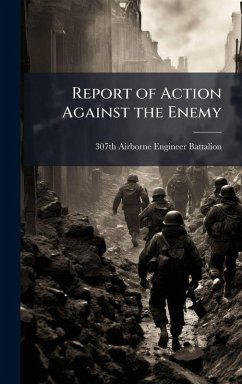
Enemy Inside the Gates
Versandkostenfrei!
Versandfertig in über 4 Wochen
27,99 €
inkl. MwSt.
Weitere Ausgaben:

PAYBACK Punkte
14 °P sammeln!
As the world's urban areas continue to increase in size the possibility of U. S. forces conducting military operations in urbanized terrain also increases. However, the weapon systems the U. S. procures and employs obtain maximum effectiveness in open terrain. These weapons prove less capable in urban terrain since their standoff and precision advantages suffer degradation due to buildings and the fleeting nature of enemy personnel. U. S. weaponry also causes a large amount of collateral damage that may also result in civilian casualties, which proves politically unacceptable. Potential advers...
As the world's urban areas continue to increase in size the possibility of U. S. forces conducting military operations in urbanized terrain also increases. However, the weapon systems the U. S. procures and employs obtain maximum effectiveness in open terrain. These weapons prove less capable in urban terrain since their standoff and precision advantages suffer degradation due to buildings and the fleeting nature of enemy personnel. U. S. weaponry also causes a large amount of collateral damage that may also result in civilian casualties, which proves politically unacceptable. Potential adversaries of the U. S. realize these limitations and present a target set that proves difficult to locate and engage. The target set the enemy uses in urban terrain consists of enemy combatants mixing with non-combatants, enemy snipers, and special purpose teams. The enemy's urban target set present significant problems for U. S. forces operating against it. U. S. weapons systems cannot effectively engage enemy combatants and ensure that non-combatant casualties do not occur. Assets the U. S. possesses that can engage elements of the enemy's urban target set include U. S. Army and Marine Corps snipers. However, a determination on whether more snipers will effectively defeat the target set requires consideration. The argument proposes that the creation of a division-level sniper company meets the requirement for adequately providing coverage of large urban areas in order to defeat the urban target set without causing civilian casualties. This monograph analyzes the contemporary operating environment to articulate the enemy's urban target set. Next, a review of current U. S. Army and Marine Corps sniping doctrine, organization and training establishes the foundation for presenting the sniper's capability to defeat the urban target set. In order to provide a balanced argument, other possible solutions to engaging and defeating the target set receive consideration. The recommended sol This work has been selected by scholars as being culturally important, and is part of the knowledge base of civilization as we know it. This work was reproduced from the original artifact, and remains as true to the original work as possible. Therefore, you will see the original copyright references, library stamps (as most of these works have been housed in our most important libraries around the world), and other notations in the work. This work is in the public domain in the United States of America, and possibly other nations. Within the United States, you may freely copy and distribute this work, as no entity (individual or corporate) has a copyright on the body of the work. As a reproduction of a historical artifact, this work may contain missing or blurred pages, poor pictures, errant marks, etc. Scholars believe, and we concur, that this work is important enough to be preserved, reproduced, and made generally available to the public. We appreciate your support of the preservation process, and thank you for being an important part of keeping this knowledge alive and relevant.












